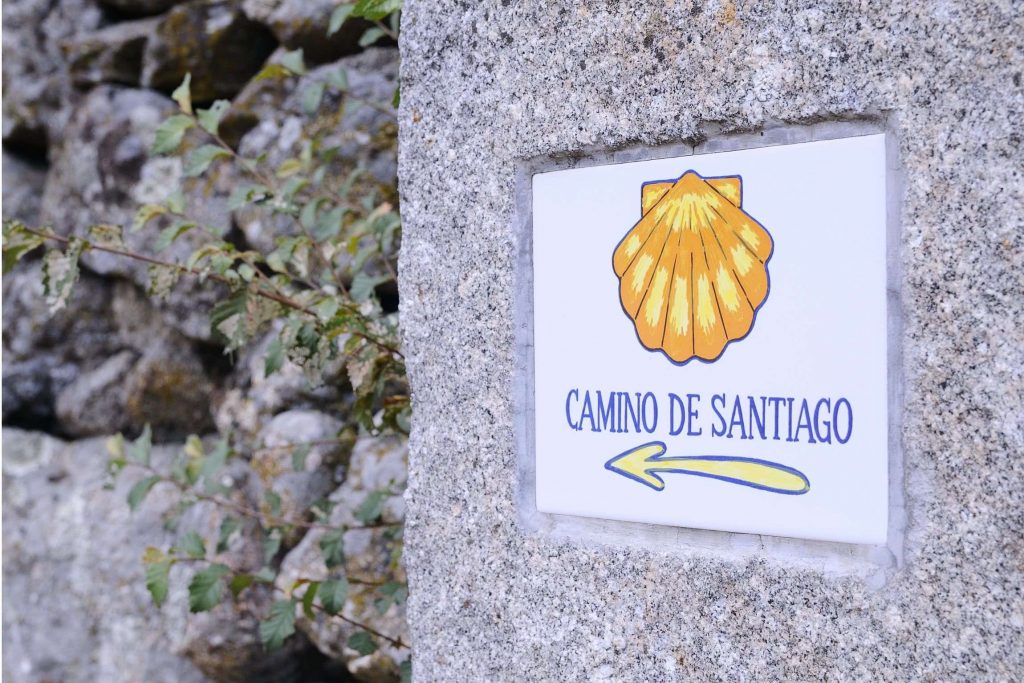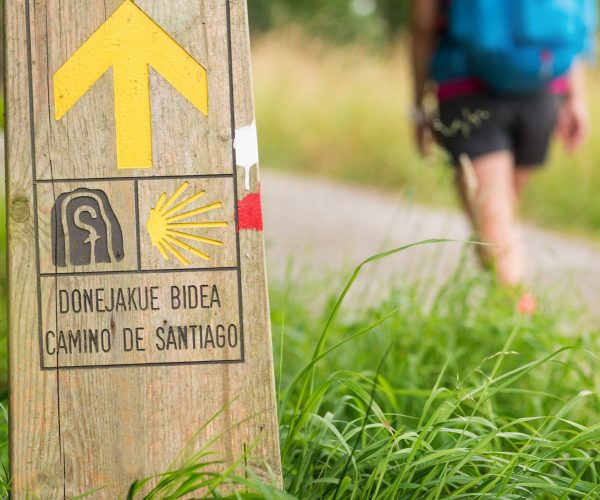Walking the Camino de Santiago with a school group gives students a chance to learn about local history, culture and religion in a very different and active way, as well as practicing their language skills and feeling part of a group-bonding challenge.
Our travel team has prepared these simple tips for teachers walking the Camino de Santiago with a school group, to help you plan and make the most of this unique journey:

-HISTORY OF THE CAMINO
Students will be fascinated by the history of the Camino de Santiago and the fact that hundreds of thousands of pilgrims have taken these trails before them for over 1000 years.
The Camino is no ordinary walk. Pilgrims from all over Europe and the rest of the world have been travelling to Santiago since the 9th century, when a shepherd found the body of Saint James the Apostle in a field. This event gives Santiago de Compostela its name: which means Saint James (Santiago) of the Field of Stars (de Compostela from Campus Stellae in Latin).
Some pilgrims back in the Middle Ages would actually walk the Camino on behalf of other people, in some cases for money! And in some countries walking the Camino was imposed as a penalty for certain crimes.
If you are walking the Camino de Santiago with a school group and would like to share some of the history with your students, you can find more information about the trail here: History of the Camino de Santiago.
-SYMBOLS AND TRADITIONS
There are many traditions and symbols associated with pilgrims on the Camino de Santiago such as following the yellow arrows and scallop shells.
The scallop shells widely found on the Atlantic coast of Galicia, were traditionally the proof that pilgrims had completed their journey to Santiago. Today, pilgrims walking at least 100kms into Santiago can request their ‘Compostela’ pilgrim certificate but remember to stamp your pilgrim ‘passport’.
Some of the most popular Camino traditions include attending pilgrim mass at the cathedral, visiting the crypt of St James and hugging the figure of St James behind the main altar.

-PILGRIM ‘PASSPORT’
The students will receive a ‘pilgrim passport’ each, also known as ‘credencial’. Camino pilgrims stamp this ‘passport’ along the route (twice if only walking the last 100kms) so they can prove that they have walked the trail at the Pilgrims Office in Santiago de Compostela, in order to get their ‘Compostela’ pilgrim certificate. Most stores, hotels, hostels, cafes, restaurants, churches will have a stamp available for passing pilgrims.
It is also a lovely memento of the journey.
-LANGUAGE BASICS
Walking the Camino de Santiago with a school group is a great opportunity for students to brush up on their language skills. It is also a chance to explain to them the variety of languages and cultures that coexist in Spain.
If walking in Galicia, they’ll notice most names are in Galician language (similar to Portuguese), which is widely spoken. Therefore they will see Camino referred to as O Camiño de Santiago.
They will still be able to practice their Spanish though, in cafes, restaurants and with other pilgrims. One useful sentence to get familiar with is ‘Buen Camino!’ or ‘Bon Camiño’, a greeting used by pilgrims and locals to wish passersby a safe and enjoyable journey.
-RECOMMEND TRAINING
When walking the Camino de Santiago with a school group, or any group!, it is highly recommended that students ‘practice’ or do some training before the trip. On the Camino they will be walking an average of 20 to 25kms each day, every day, so it is important they get used to a full day on the go and also comfortable with their walking gear, particularly their backpack and shoes.
An easy training plan would be going on a long walk (10kms or more if possible) at least once a week, starting at least 4-6 weeks before their Camino trip. If they can manage more than once a week, it would be perfect.
The more training, the better, particularly if your school group is covering a long distance on the Camino (150kms or more).
If you are walking for more than a week we will recommend taking a rest day after 6-7 days.
-PACKING LIST
One thing to avoid is brand new walking shoes, as they will only result in painful blisters. The best option is to take comfy walking shoes that we are well used to and if there is a need for new ones, students should make sure they ‘break them in’ before their trip.
Share with them a simple packing list, some of the items to include:
- Layers of clothes including warm layers
- A day backpack (anything up to 30ltrs is perfect) for water and snacks, ideally with hip straps
- Sun protection
- Waterproof/windproof jacket
- Hat or cap (depending on the season, in Spring and Autumn you might need both!)
- Merino wool socks
- Walking shoes with good grip (or boots if you are walking a very mountainous section)
- Earplugs (if they are sharing dorms)
- Water bottle to refill with water each day
-WHEN TO TRAVEL
Late Spring and Autumn are probably the best seasons to walk the Camino de Santiago with a school group. April, May, June, September and October are great months to experience the trails to Santiago.
-CAMINO DE SANTIAGO WITH A SCHOOL GROUP IDEAS
At JWT Travel we can help you organise your Camino de Santiago with a school group, suggesting itineraries, routes and arranging all the logistics, from flights to accommodation and additional activities..
You can find more information about the Camino de Santiago to share with your students here: Interesting Camino facts.
If you are a teacher planning to walk the Camino de Santiago with a school group, our travel experts can assist, contact us for a quote or no strings attached consultation.
Contact Us



